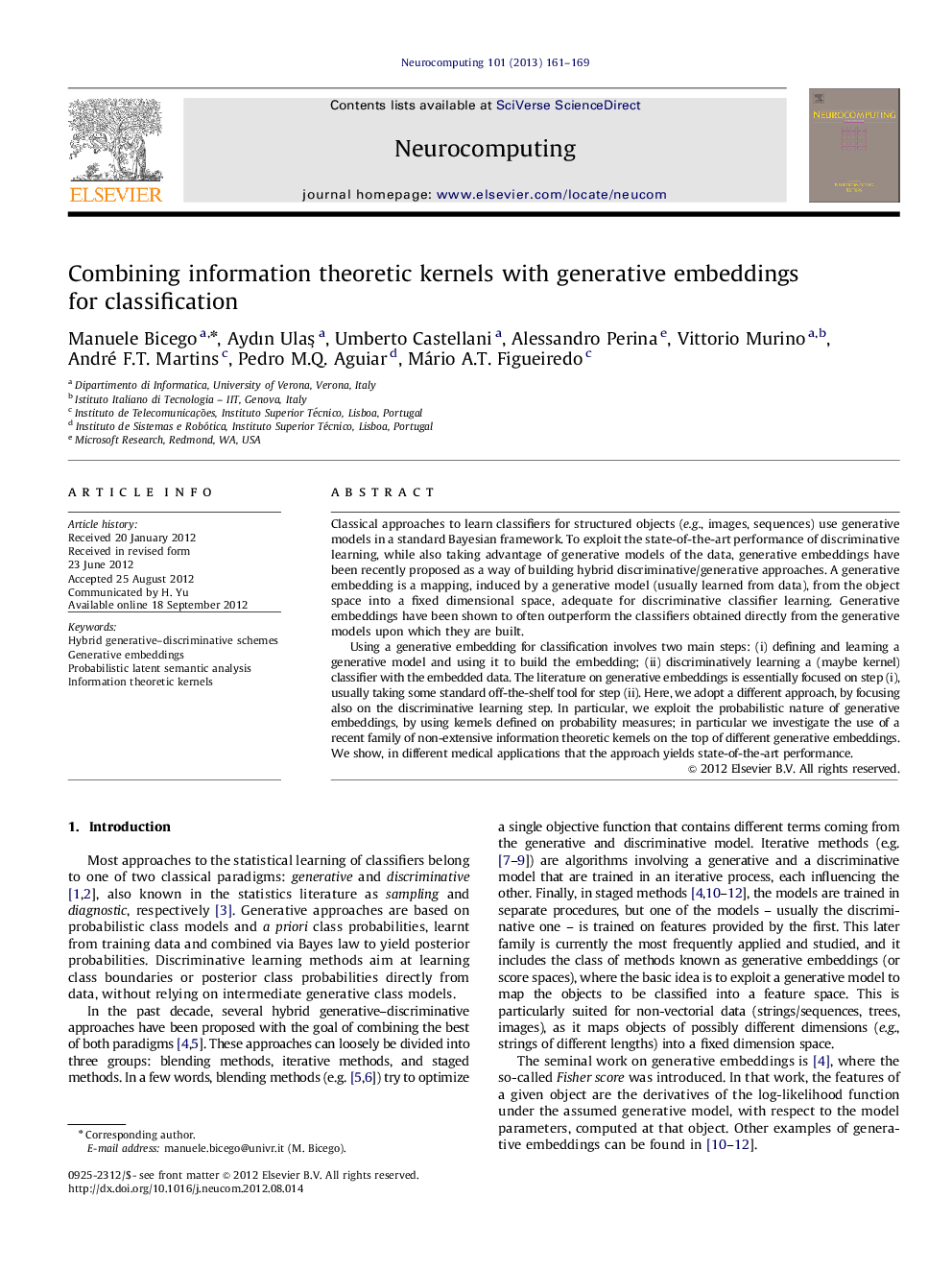| Article ID | Journal | Published Year | Pages | File Type |
|---|---|---|---|---|
| 407591 | Neurocomputing | 2013 | 9 Pages |
Classical approaches to learn classifiers for structured objects (e.g., images, sequences) use generative models in a standard Bayesian framework. To exploit the state-of-the-art performance of discriminative learning, while also taking advantage of generative models of the data, generative embeddings have been recently proposed as a way of building hybrid discriminative/generative approaches. A generative embedding is a mapping, induced by a generative model (usually learned from data), from the object space into a fixed dimensional space, adequate for discriminative classifier learning. Generative embeddings have been shown to often outperform the classifiers obtained directly from the generative models upon which they are built.Using a generative embedding for classification involves two main steps: (i) defining and learning a generative model and using it to build the embedding; (ii) discriminatively learning a (maybe kernel) classifier with the embedded data. The literature on generative embeddings is essentially focused on step (i), usually taking some standard off-the-shelf tool for step (ii). Here, we adopt a different approach, by focusing also on the discriminative learning step. In particular, we exploit the probabilistic nature of generative embeddings, by using kernels defined on probability measures; in particular we investigate the use of a recent family of non-extensive information theoretic kernels on the top of different generative embeddings. We show, in different medical applications that the approach yields state-of-the-art performance.
► Combination of information theoretic kernels with generative embeddings. ► Shown the crucial role of the kernel in a generative–discriminative scheme. ► Applied for the first time to the medical domain. ► Thorough comparison of different generative embeddings and IT kernels.
